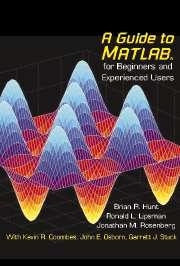1 - Getting Started
Published online by Cambridge University Press: 05 June 2012
Summary
In this chapter, we will introduce you to the tools you need to begin using MATLAB effectively. These include: some relevant information on computer platforms and software versions; installation and location protocols; how to launch the program, enter commands, use online help, and recover from hangups; a roster of MATLAB's various windows; and finally, how to quit the software. We know you are anxious to get started using MATLAB, so we will keep this chapter brief. After you complete it, you can go immediately to Chapter 2 to find concrete and simple instructions for the use of MATLAB. We describe the MATLAB interface more elaborately in Chapter 3.
Platforms and Versions
It is likely that you will run MATLAB on a PC (running Windows or Linux) or on some form of UNIX operating system. (The developers of MATLAB, The MathWorks, Inc., are no longer supporting Macintosh. Earlier versions of MATLAB were available for Macintosh; if you are running one of those, you should find that our instructions for Windows platforms will suffice for your needs.) Unlike previous versions of MATLAB, version 6 looks virtually identical on Windows and UNIX platforms. For definitiveness, we shall assume the reader is using a PC in a Windows environment. In those very few instances where our instructions must be tailored differently for Linux or UNIX users, we shall point it out clearly.
- Type
- Chapter
- Information
- A Guide to MATLABFor Beginners and Experienced Users, pp. 1 - 7Publisher: Cambridge University PressPrint publication year: 2001



